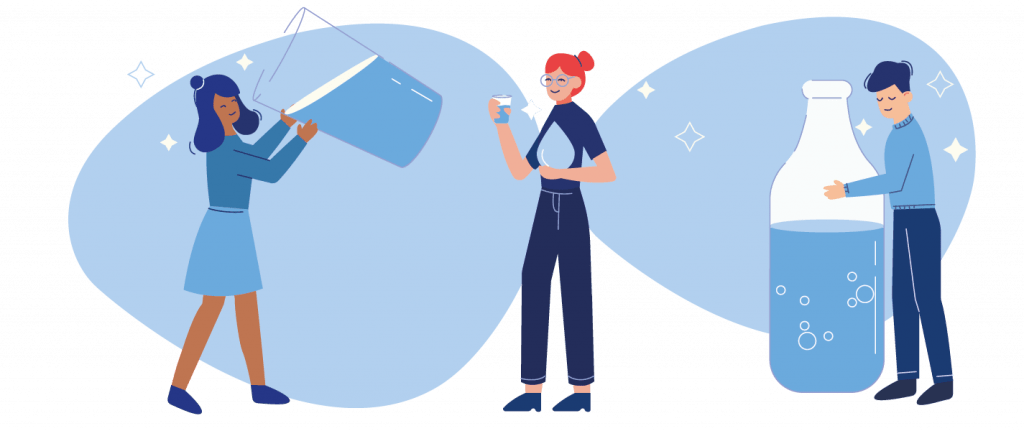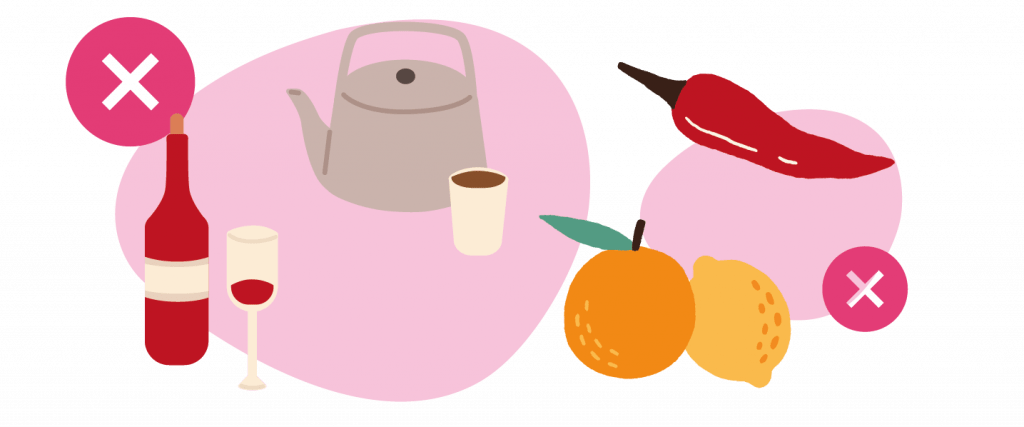Changing your Diet to Handle Bladder Weakness
Urinary incontinence (UI) is a condition, not a limitation. If your mobility is not restricted, there is no need to let UI define who you are. You can still lead a normal life. This is the reason why we want to show you how to have a valuable impact on your condition. While there is no “diet” that can cure incontinence, there are symptoms that it’s possible to manage through dietary intervention. With these easy tips you can easily adapt your diet to handle bladder weakness.
6 tips for improving your diet to better your bladder weakness
1. Stay hydrated
Drinking too little water, your urine can become concentrated and may irritate your bladder. This will make the one in your care use the toilet more often. Limiting fluid intake may increase the incidence. Many people who have bladder control problems reduce the amount of liquids they consume in the hope that they will need to urinate less often. Unfortunately, this creates more problems. With less total liquid, urine will be more highly concentrated. This in turn irritates the bladder surface, causing the individual to go to the bathroom more often. Reducing fluid intake can also encourage growth of bacteria which triggers bladder weakness and can result in a urinary tract problem.

2. Drink in moderation
Alcohol affects the messages that pass from the brain to the bladder to tell it when to hold urine and when to release. If you have alcohol in your system, there is less control over that signalling, and your overactive bladder is more likely to dysfunction.
3. Cut out carbonated drinks
The carbon dioxide in these drinks can irritate a sensitive bladder, triggering the urge to urinate.
4. Cut back on caffeïne
Soft drinks, teas, chocolate, and even decaf coffee contain caffeine. It makes you feel like you must go, and it also prompts your body to get rid of liquids. Remove or reduce caffeine intake, limit it to morning coffee.

5. Spicy food
If the one in your care has an overactive bladder, avoid eating spicy foods like Mexican dishes, Chinese cuisine, chilli peppers, chilli, and horseradish.
6. Avoid acidity
Citrus foods and tropical juices like orange and pineapple have acid that can irritate the one in your care. It can and make the one in your care feel like they need to use more often the toilet. Tomatoes are also acidic.
It is recommended to drink a total of 6 to 8 glasses of water throughout the day. Unless under the advice of your physician, never restrict fluids to control an overactive bladder. Next to adapting your diet to handle bladder weakness you can also try Kegel exercises to strengthen your pelvic floor.

What does a healthy diet for bladder weakness look like?
- 30% fruit and vegetables
- 12% meat, fish, eggs and beans
- 12% milk and dairy foods
- 6% food and drinks high in fat and/or sugar
- 30% bread, rice, potato or pasta and other starchy food
Keep track of your success
Keep a complete bladder diary and monitor food and fluid intake to see if there is any relationship between intake and urination. Remember that certain “natural” or “energy” supplements may also contain ingredients that irritate the bladder, so read labels carefully.
If you change your diet to handle bladder weakness and want to track your voiding, make sure you keep a voiding diary with you. Here you can fill in all necessary information for your voiding and additionally add your diet.


1 Comment
[…] Food & Lifestyle for Men […]